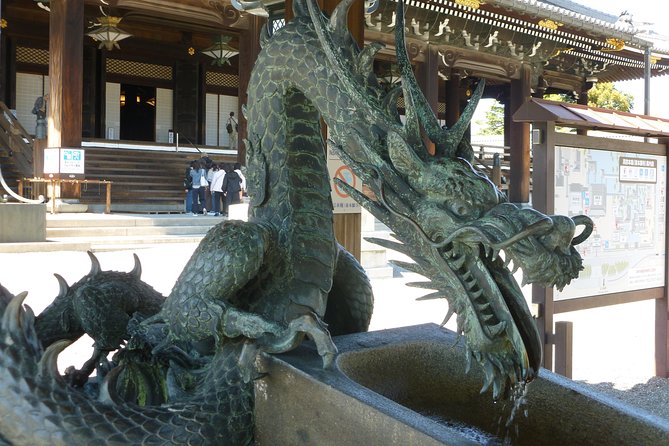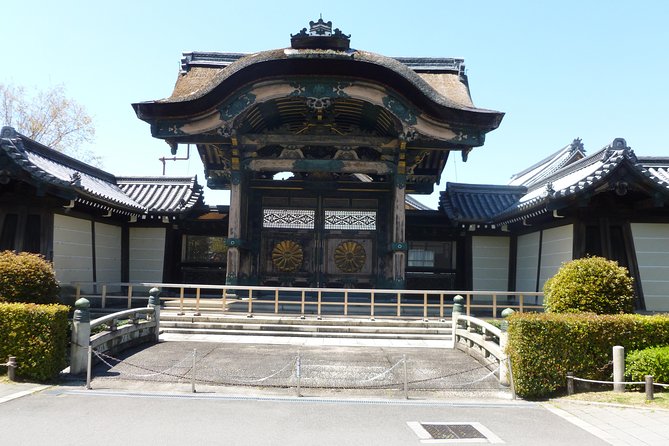In today’s fast-paced world, did you know that over 500 million people globally identify as Buddhists? As individuals seek spiritual fulfillment amidst the chaos of modern life, the concept of ‘Living Buddhism’ offers a unique perspective on how this ancient practice remains relevant and transformative.
By exploring the ways in which Buddhists navigate the complexities of contemporary society while staying true to their faith, a rich tapestry of tradition and innovation unfolds. Stay tuned to uncover the profound impact of ‘Living Buddhism’ on the lives of its practitioners and the world at large.
Key Takeaways

- Embracing mindfulness and ethical living as core principles
- Blending ancient teachings with modern challenges for relevance
- Practicing diverse meditation techniques for self-awareness and spiritual connection
- Celebrating colorful festivals and ceremonies to deepen understanding and cultural heritage
History of Buddhism

Buddhism, originating in ancient India, follows the teachings of Siddhartha Gautama, commonly known as the Buddha. The origins of Buddhism can be traced back to around the 6th century BCE when Siddhartha Gautama attained enlightenment and began sharing his insights.
The ancient texts, known as the Tripitaka or Pali Canon, contain the teachings of the Buddha and form the foundation of Buddhist philosophy. These texts cover various aspects of life, including morality, meditation, and wisdom. Over time, Buddhism spread to different regions, adapting to local cultures and practices.
Studying the ancient texts provides a glimpse into the rich history and evolution of Buddhism, offering valuable insights into its core principles and beliefs.
Core Beliefs and Practices
Embracing mindfulness as a daily practice, adherents of this ancient philosophy cultivate inner peace and self-awareness through meditation and ethical living. Buddhist ethics play a central role in guiding followers to lead a moral and compassionate life.
Mindfulness practices, such as meditation and mindful breathing, are essential tools in the pursuit of enlightenment and understanding the nature of reality. By following the Noble Eightfold Path, which includes principles like right understanding, intention, speech, and livelihood, practitioners aim to alleviate suffering and achieve liberation from the cycle of rebirth.
These core beliefs and practices form the foundation of Buddhism, offering a practical and holistic approach to living a meaningful and fulfilling life.
Buddhist Meditation Techniques

To deepen their practice and enhance self-awareness, adherents of this ancient philosophy engage in various Buddhist meditation techniques.
-
Mindfulness Practice: Mindfulness meditation involves focusing on the present moment without judgment, allowing practitioners to cultivate awareness of their thoughts, feelings, and surroundings.
-
Zen Teachings: Zen meditation, known as Zazen, emphasizes sitting in a specific posture and observing the breath to achieve insight and enlightenment.
-
Mantra Meditation: This technique involves repeating a word or phrase silently or aloud, such as ‘Om mani padme hum,’ to calm the mind and connect with deeper spiritual meanings.
These meditation practices help individuals quiet the mind, reduce stress, and develop a deeper connection to themselves and the world around them.
Buddhist Festivals and Celebrations
One of the most vibrant aspects of Buddhist culture is the array of colorful festivals and celebrations that bring communities together in joyous harmony. These events often showcase intricate Buddhist art and traditional ceremonies, providing a glimpse into the rich cultural heritage of Buddhism.
From the mesmerizing lantern festivals in Japan to the lively Vesak celebrations in Sri Lanka, each festival offers a unique experience for both locals and visitors. Participants can immerse themselves in the spiritual essence of Buddhism through these joyous occasions, gaining insights into the teachings and practices of this ancient religion.
Whether admiring intricate sand mandalas or participating in traditional rituals, Buddhist festivals and celebrations offer a wonderful opportunity to connect with the community and deepen one’s understanding of Buddhist traditions.
Spread of Buddhism

Throughout history, Buddhism has spread across various regions, influencing diverse cultures and societies.
-
Buddhism in Japan: Buddhism arrived in Japan in the 6th century CE and has since become deeply intertwined with Japanese culture, shaping traditions and beliefs.
-
Buddhist Art Evolution: As Buddhism spread to different regions, it influenced the evolution of art, leading to unique styles and representations in sculptures, paintings, and architecture.
-
Cultural Integration: The spread of Buddhism allowed for the integration of local customs and beliefs, resulting in a rich tapestry of cultural practices across Asia and beyond.
Modern Interpretations

In exploring modern interpretations of Buddhism, practitioners often seek to adapt ancient teachings to contemporary life challenges. Contemporary perspectives on Buddhism focus on applying the core principles of mindfulness, compassion, and interconnectedness to address issues such as stress, anxiety, and social injustice.
This approach resonates with many individuals navigating the complexities of modern life, offering practical tools for personal growth and societal transformation. Additionally, Buddhist art continues to evolve, blending traditional styles with modern techniques to convey timeless messages in innovative ways.
Through these interpretations, Buddhism remains relevant and accessible to people from all walks of life, inspiring them to cultivate inner peace and contribute to a more harmonious world.
Frequently Asked Questions

Can Buddhism Be Practiced Alongside Other Religions or Spiritual Beliefs?
Buddhism can be practiced alongside other religions or spiritual beliefs through interfaith dialogues and spiritual exploration. Religious syncretism and mindfulness practices foster understanding and unity among diverse beliefs, enriching personal growth and fostering mutual respect.
How Do Buddhists View Concepts of Heaven and Hell?
Buddhists perceive heaven and hell as temporary states based on karma balance within rebirth cycles. Actions determine these realms, not eternal punishment or reward. Understanding karma and rebirth shapes Buddhist perspectives on these concepts.
What Role Do Animals Play in Buddhist Beliefs and Practices?
In Buddhist beliefs and practices, animals hold significant roles. Animal welfare is emphasized, promoting compassion meditation towards all sentient beings. Understanding the interconnectedness of life, Buddhists seek to alleviate animal suffering and cultivate kindness.
How Does Buddhism Address Issues of Social Justice and Activism?
Buddhist ethics emphasize compassion and equality, driving social change. Mindfulness guides activism, promoting fairness and awareness. Buddhists advocate for justice through peaceful means, fostering unity and understanding in addressing societal issues.
Are There Specific Dietary Guidelines or Restrictions for Buddhists to Follow?
Buddhists often follow a vegetarian lifestyle as part of cultural traditions. This choice is believed to bring health benefits and deepen spiritual connections. The practice varies among Buddhist sects, emphasizing mindfulness and compassion towards all beings.
Conclusion

In conclusion, ‘Living Buddhism’ showcases the dynamic fusion of tradition and modernity, where followers embody the teachings of the Buddha in their daily lives.
From meditation practices to festive celebrations, Buddhism continues to evolve and adapt to the complexities of the contemporary world.
Through this lens, one can witness the resilience and adaptability of this ancient faith, making it a relevant and vibrant path for seekers of enlightenment today.
Join the journey to explore the pulsating heartbeat of Buddhism in the modern world.
